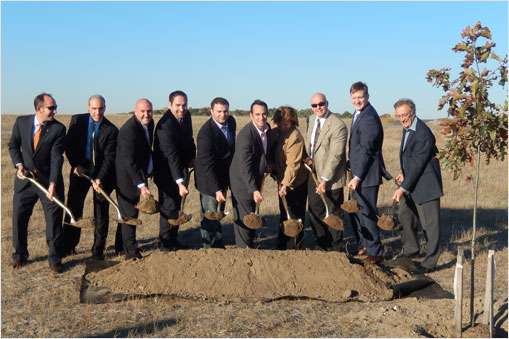 October 21, 2013 CONTACT: Chris Gilbride/ Ted Timbers (718) 595-6600 Department of Environmental Protection Marks Completion of First Phase of Remediation and Hosts Tree Planting Ceremony at Former Brookfield Avenue Landfill on Staten IslandMore than 17,000 Trees Planned for New Park at Former Landfill SiteDepartment of Environmental Protection (DEP) Commissioner Carter Strickland today joined New York State Assembly Members Joseph Borelli and Lou Tobacco, and New York City Council Members James Oddo and Vincent Ignizio at a tree planting ceremony at the site of the former Brookfield Avenue Landfill, along Arthur Kill Road in Great Kills, Staten Island. In 2009, DEP began a $241 million project to remediate and naturally restore the former landfill site, which will be opened as a public park in 2017. The trees planted today are among the first of more than 17,000 planned for the 132 acre site, and will also make substantial progress towards the PlaNYC goal of planting one million trees across the City by 2017. In addition, approximately 76,000 wetland plantings will also be added to preserve the recently restored 7.7 acres of tidal wetlands and 9.3 acres of freshwater wetlands around the landfill. “Through close collaboration with the community we have successfully capped the former landfill and transformed it into a beautiful open space,” said DEP Commissioner Carter Strickland. “When this park is completed it will serve as a great new amenity for the Great Kills neighborhood and be a destination for all New Yorkers who enjoy the great outdoors.” The Brookfield Avenue Landfill site is a former New York City municipal solid waste facility that operated from 1966 until 1980. As part of the remediation, with funding from the state and general city funds, an impermeable landfill cap and below-ground barrier were installed to contain any pollutants from the site and eliminate exposure for future park users and aquatic life in the adjacent wetlands. More than 2 million tons of clean soil, up to four feet deep, was then spread across the impermeable barrier and the addition of prairie grass and native plantings will prevent erosion and attract birds and butterflies. This first phase of the remediation, closure of the landfill and restoration of the wetlands, was completed on schedule earlier this year. Since the outset of the remediation project, a number of community participation activities were conducted to inform and educate the public about the site, and the potential remedial alternatives. A natural outgrowth of this process was the establishment of Citizens Advisory and Science Advisory Committees, and public information sessions continued as the project moved from design through construction. DEP manages New York City’s water supply, providing more than one billion gallons of water each day to more than 9 million residents, including 8.3 million in New York City, and residents of Ulster, Orange, Putnam, and Westchester counties. This water comes from the Catskill, Delaware, and Croton watersheds that extend more than 125 miles from the City, and the system comprises 19 reservoirs, three controlled lakes, and numerous tunnels and aqueducts. DEP employs nearly 6,000 employees, including almost 1,000 scientists, engineers, surveyors, watershed maintainers and others professionals in the upstate watershed. In addition to its $68 million payroll and $157 million in annual taxes paid in upstate counties, DEP has invested more than $1.5 billion in watershed protection programs—including partnership organizations such as the Catskill Watershed Corporation and the Watershed Agricultural Council—that support sustainable farming practices, environmentally sensitive economic development, and local economic opportunity. In addition, DEP has a robust capital program with over $14 billion in investments planned over the next 10 years that will create up to 3,000 construction-related jobs per year. For more information, visit nyc.gov/dep, like us on Facebook at facebook.com/nycwater, or follow us on Twitter at twitter.com/nycwater. | ||